Your Guide To Installing Solar & Batteries In Regional WA
More than half a million small-scale solar power systems had been installed across Western Australia up to the middle of 2025, and home batteries are becoming increasingly popular. It’s no surprise given WA is one of the sunniest places on earth!
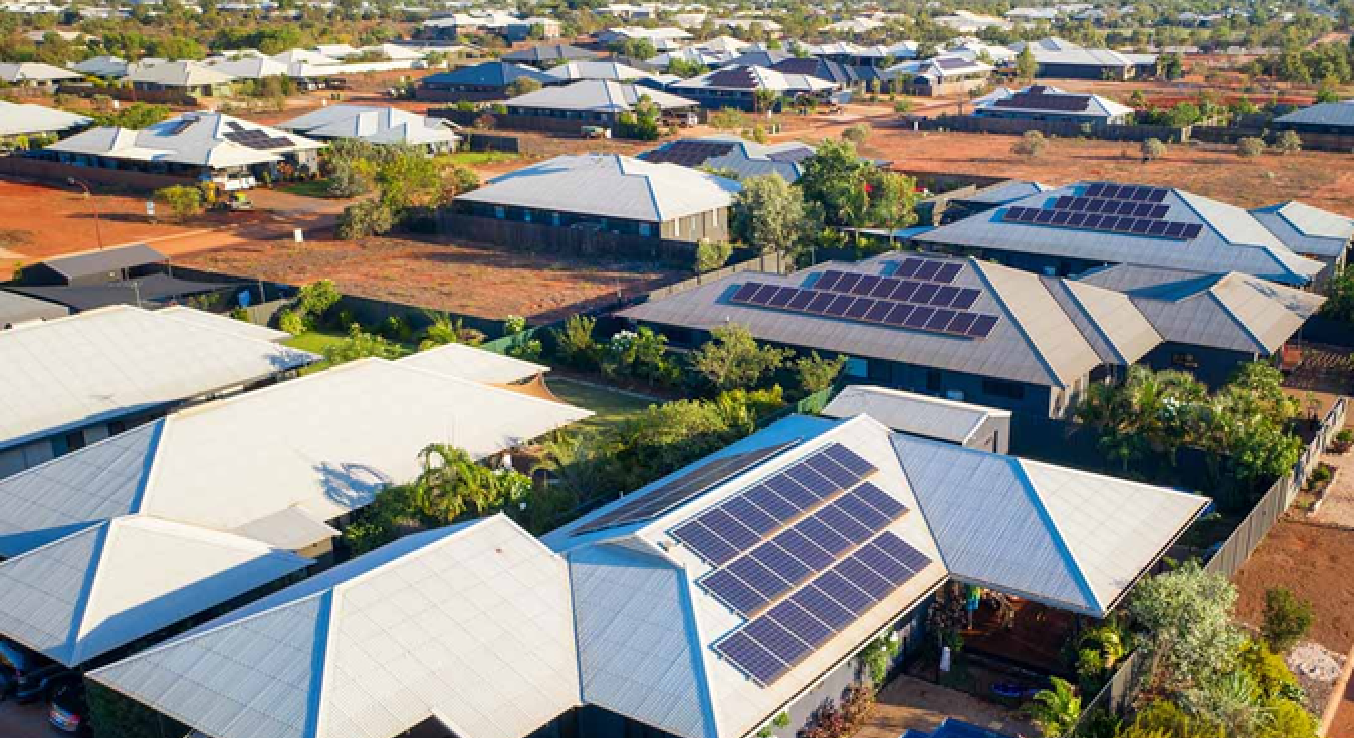
Whether you’re thinking of joining your fellow Western Australians in the rooftop solar revolution, or considering adding a home battery to an existing system, this guide and the resources it links to will tell you everything you need to know.
Table of Contents
- Understanding Rooftop Solar
- How Many Panels Do You Need And How Much Will They Save?
- Understanding Home Batteries
- Understanding Installation In Regional WA
- Understanding Solar Warranties
- Post-Install: Solar/Battery System Safety And Maintenance
- The Role of Horizon Power And Smart Connect Solar
- Rebates And Incentives For Solar And Batteries
- Solar/Battery Costs And Payback In Regional WA
- Thinking Of Going Off-Grid?
- The Next Step
Understanding Rooftop Solar
There are four main components of a home solar power system:

- Solar panels: These convert sunlight into DC electricity. Learn more about choosing the best panels and the brands we recommend.
- Solar inverter: Usually mounted on a wall near (or as close as possible) to your meter box, a solar inverter takes the DC electricity generated by the panels and turns it into AC power suitable for use in your home or exporting to the grid. Learn more about choosing solar inverters, including brand recommendations.
- Racking/mounting: A support system that fixes the solar panels to your roof. Basically, racking consist of aluminium lengths bolted together, brackets, and special clamps for affixing the panels to. In many regions of WA they also need to abide by cyclone rating requirements that include a building permit – talk to your installer to confirm they will be obtaining this on your behalf.
- Monitoring: Consumption monitors are small devices that sit in your switchboard. They measure how much electricity is coming from or going to the grid. While you can install a solar system without a consumption monitor, adding one is highly recommended as an inverter on its own only tell you how much solar energy your system is generating. A consumption monitor will also show you how much solar energy and mains grid electricity is being used, which is really handy for understanding and optimising energy consumption. This in turn could help you choose a battery size.
For more detailed information on each of these and other components in a rooftop solar power system, see our full guide to understanding solar.
How Many Panels Do You Need And How Much Will They Save?
More important than the number of panels is their collective capacity. There are several important terms to understand:
- Watts (W) and Kilowatts (kW): are measures of power. A single solar panel is rated in Watts; e.g. 415 W, and there are 1,000 Watts to a kilowatt. A solar system’s size is its total panel power (capacity); e.g. 6.6 kW.
- Kilowatt-hours (kWh): is a measure of energy. This is how much a solar system will generate over a period of time; e.g. 28 kilowatt-hours on average a day.
A solar power system is great for generating electricity during a sunny day, and will even produce some juice during overcast conditions. But winter in particular plays a major impact on generation in some parts of regional Western Australia as demonstrated in this graph:
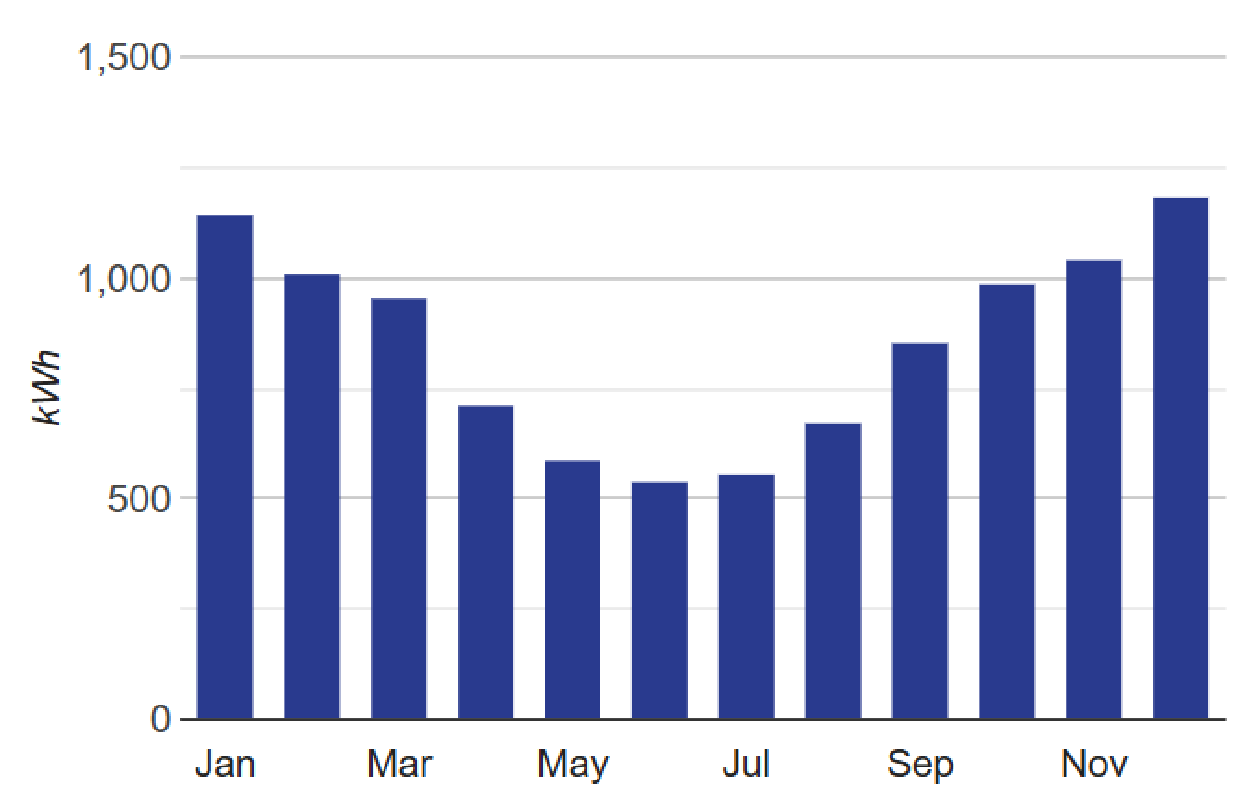
That’s why you need a system sized not based on an average day, but an average winter’s day in the Esperance region.
To determine how much electricity you use on average per winter day, take a look at your bi-monthly electricity bill covering the June – August period. It will be under “Your Energy Use”.
But …
In some parts of regional WA such as Kununurra, winter has less impact on solar energy production. In fact, in the Kununurra region and other towns in the north of the state, the lowest output is generally during the wet season in February.
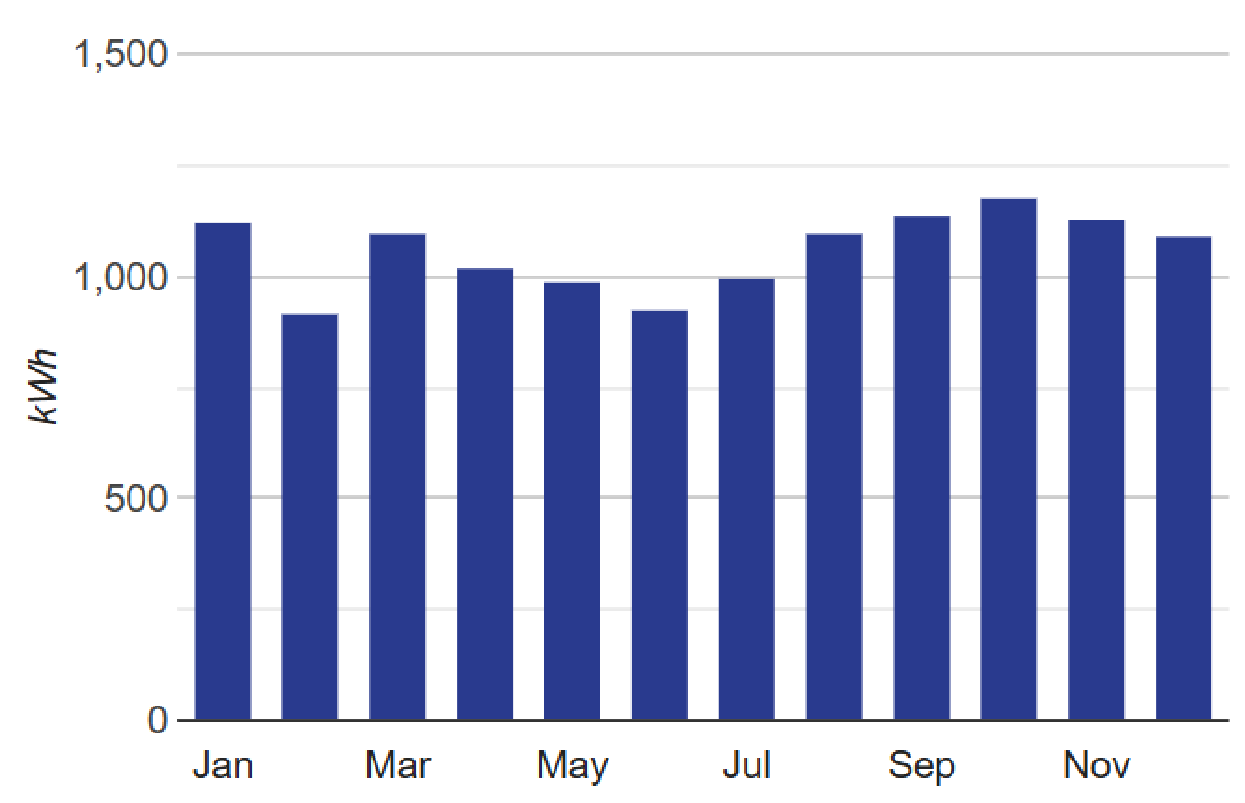
The recommended system size will differ not only on your energy consumption profile, location and your roof’s orientation.
Using the SolarQuotes solar calculator with its default settings, the following is an estimate of what a 6.6 kW solar system (a popular size in WA) will produce on average over a year and how much it could save you annually.
| Location/Postcode | Avg. Annual Generation | Estimated Annual Savings |
|---|---|---|
| Esperance – 6450 | 10,266 kWh | $927 |
| Carnarvon – 6701 | 12,497 kWh | $989 |
| Karratha – 6714 | 12,712 kWh | $1,009 |
| Port Hedland – 6721 | 12,712 kWh | $1,009 |
| Broome – 6725 | 12,385 kWh | $985 |
| Kununurra – 6725 | 12,385 kWh | $985 |
Give the calculator a whirl – it’s easy to use. Another option is the Horizon Power Solar Eligibility Calculator, which bases calculations on your actual consumption data as well as the accurate Buyback Bonus (feed in tariff) rates specific to your town. Or for the best rundown of all, talk to a good installer who will assess your circumstances, recommend an optimal size and provide you with a quote containing information including estimated generation, savings and payback.
Understanding Home Batteries
Even with solar panels installed, the challenge remains of avoiding mains electricity use during particularly dreary conditions, early in the morning, late in the afternoon/early evenings and overnight.
When a solar system is producing too much electricity for your household’s immediate needs during the day, the surplus is automatically exported to the grid, for which you receive credits. This can help offset the cost of mains power used at other times.
Given the maximum value of a solar power system is through self-consuming the electricity it produces rather than credits, that’s where a solar battery comes into play. It will slurp up the surplus for use in the evenings, or at other times when needed or desired.
The other significant benefit of a battery – particularly in regional Western Australia – is blackout protection. But only if you get the right one.
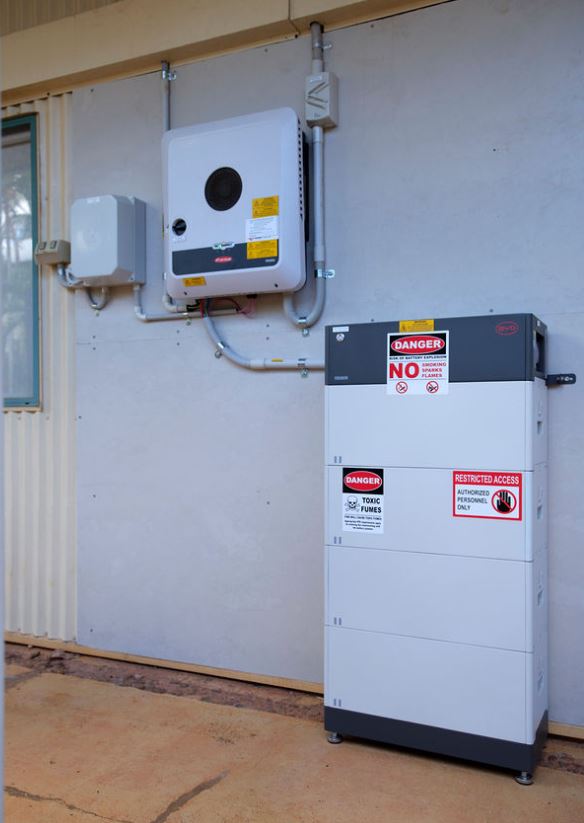
To learn everything you need to know about residential energy storage including sizing, brand recommendations and choosing the right battery for your needs, see our home battery guide.
Understanding Installation In Regional WA
In regional Western Australia, solar and battery system installations must comply with Horizon Power’s technical requirements and gain local council approvals. Installations in most cases are also required to be Category C rated for cyclones.
When having a solar and/or battery system installed, it’s not only important to use good quality components given regional Western Australia’s often harsh conditions, but also to understand that even the best components can be ruined by lousy installation.
A poor installation means your system won’t be performing at its best, negatively impacting on payback of your investment. But an even worse scenario is the potential risk to your home and the safety of those living in it.
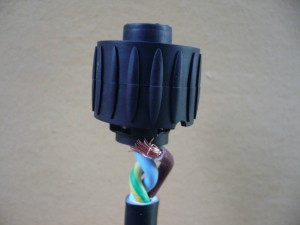
When Horizon Power introduced Smart Connect Solar in 2024 (more on this a bit later) to Western Australia’s regional towns, there was an influx of dodgy installers doorknocking and carrying out other misleading marketing. Some homeowners experienced issues with inferior installations and poor system performance as a result.
This is why it’s so important to choose a good installer, and why SolarQuotes provides extra peace of mind with our Good Installer Guarantee.
You can find reviews of and get quotes from your closest SolarQuotes-approved installers here, but note that installers may be sparse in some parts of regional Western Australia.
Note: any new solar installations in regional Western Australia are required to be energy managed by Horizon Power’s new Virtual Power Plant program – more on this later in the guide.
Understanding Solar Warranties
A solar power and/or battery system is accompanied by multiple warranties.
The Panels
There are two kinds of warranties accompanying panels – product and performance. The product warranty is a guarantee the panels will be free of defects. Most solar panel product warranties these days are 25 years, some even more. As a solar panel slowly degrades over time, the performance warranty guarantees it will maintain a certain level of power output over a specific period, usually also 25 years.
The Inverter
Inverters are usually provided with a warranty of 10 years – and this should be the minimum you accept.
The Battery
Home battery warranties protect against various issues such as defects, degradation, and performance drops. They can be structured as a fixed term (e.g., 10 years), cycle counts (number of charge/discharge cycles), or total energy throughput (total energy delivered). Home battery manufacturers usually offer a combination of fixed term and total energy throughput (whichever is reached first).
Installation Workmanship
Workmanship warranties cover issues related to the installation of the components and overall system performance. Workmanship warranties vary between 5 and 15 years.
Beat The Heat To Preserve Warranty
Something to be very aware of – and good installers are – is that while solar panels spend their working lives in the sun, inverters and batteries should not; and this can be a manufacturer warranty condition. These devices should be installed in shady positions or have a shade installed above them. Also note that on particularly hot days, your inverter/battery system may “de-rate”. This is where performance is automatically curtailed by these components to protect the system. It’s not a failure, but a feature and another important reason to ensure the inverter and battery are shaded. Simple shade structures can be purchased from most major hardware stores, but a good installer will bring one along on install day if the scenario warrants it.
Warranties – Watch Out
While warranties shorter than the above should be rejected, unfortunately a long warranty isn’t a guarantee of quality. There have been many cases where a manufacturer or installer has offered long warranties and then disappeared; and depending on the circumstances there may be little recourse.
Note that an installer has hardware warranty responsibility too – so if a manufacturer disappears, the installer is on the hook. So, choose an installer carefully. A conscientious one will be very discerning in their product selection knowing they’ll have responsibility for the product for a long time.
Post-Install: Solar/Battery System Safety And Maintenance
The good news is that well-installed solar and home battery systems are very safe and require little maintenance. But we strongly recommend having your system inspected by a suitably qualified professional every 5 years, which may cost you a few hundred dollars.
Aside from that, there’s not much you need to do unless the manufacturer directs it – this is something else to check in warranty documentation before purchase in case there are onerous (and unnecessary) conditions relating to maintenance. While required maintenance is minimal, pick up some important tips on owning a solar power and battery system to maximise performance, service life and savings.
The Role of Horizon Power And Smart Connect Solar
Horizon Power is WA’s regional and remote energy provider, transmitting power via 56,081 distribution poles to over 51,000 connection points across its network. Horizon Power’s customers are scattered across 2.3 million square kilometres.
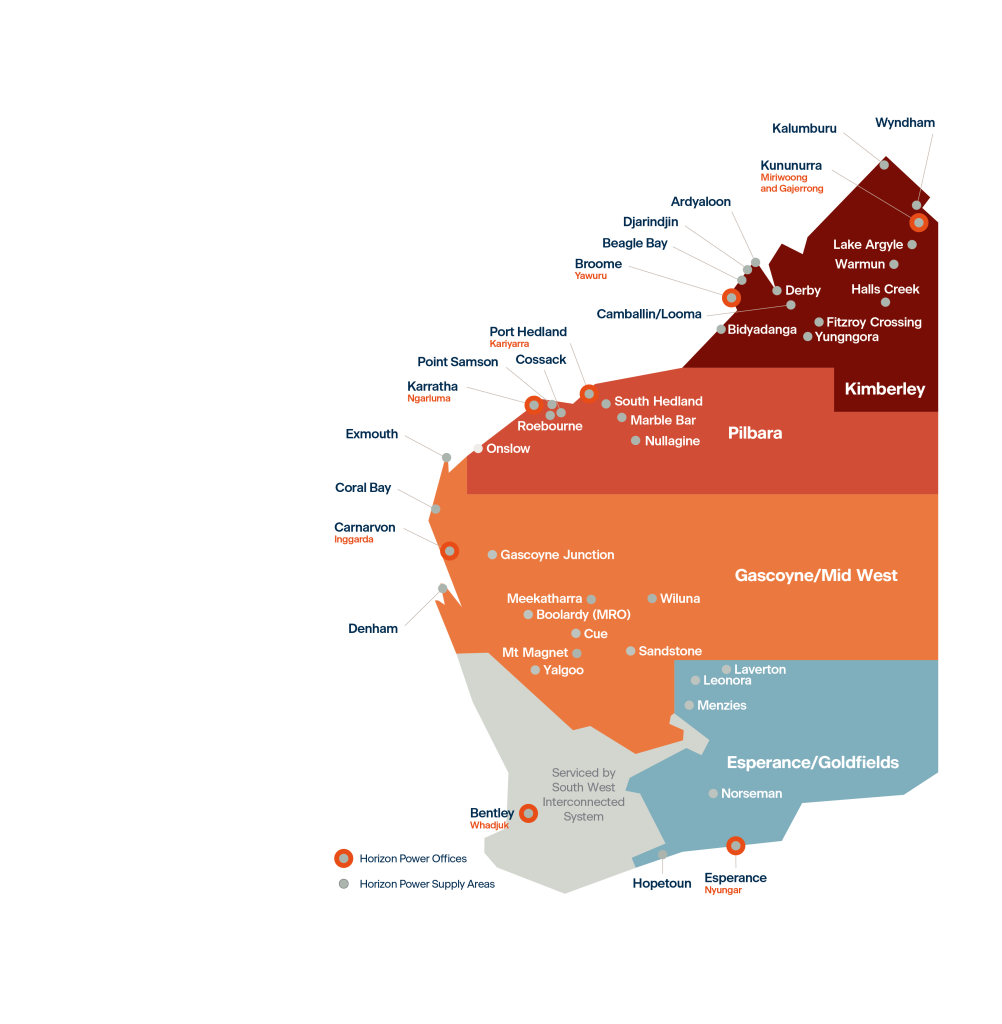
It’s a huge area and a massive job looking after all that infrastructure.
Not so long ago, residents and businesses in many towns across Horizon Power’s service area couldn’t install rooftop solar as a result of a lack of hosting capacity due to the network’s technical limitations.
Then came Horizon Power’s Smart Connect Solar initiative in 2024, which involves having an internet-connected Secure Gateway Device (SGD) installed with a system, supplied to your installer and maintained by Horizon Power.
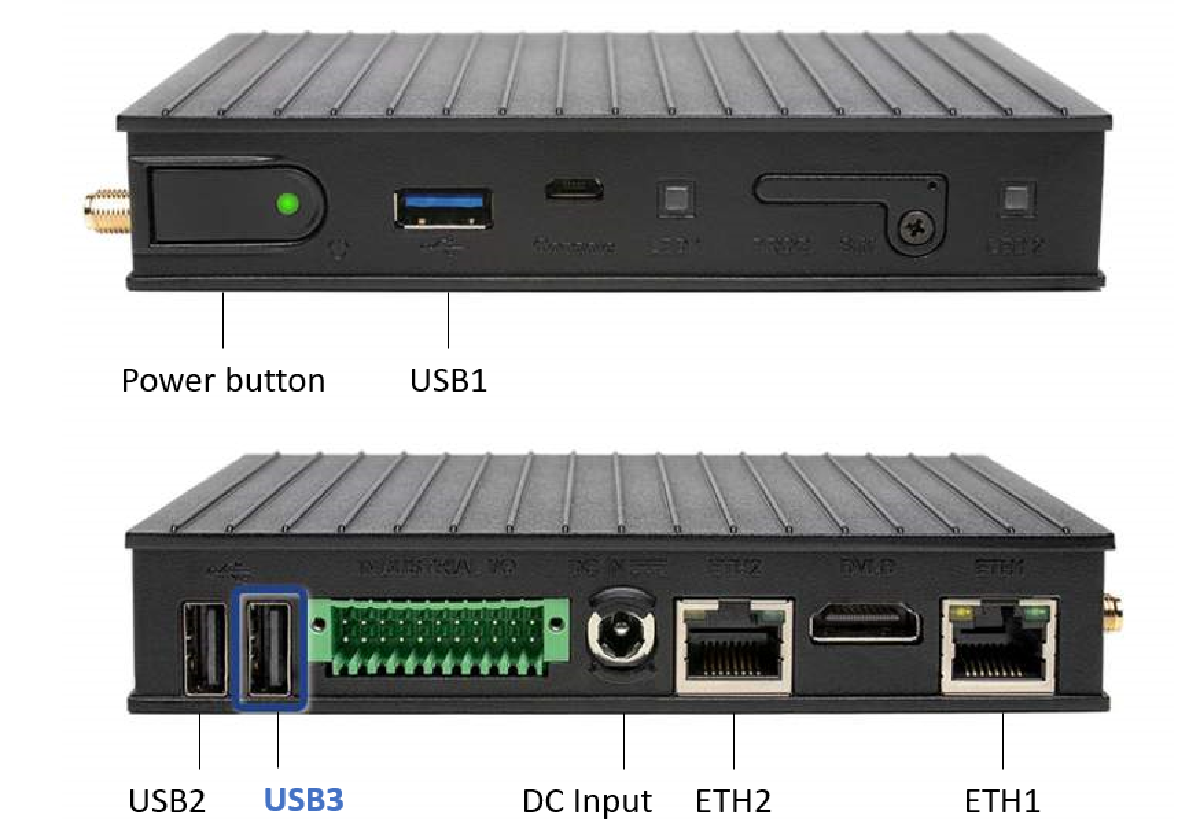
The system works in with Horizon’s Distributed Energy Resource Management System (DERMS), which analyses weather patterns, power system conditions, and renewable energy resources.
In a nutshell, Smart Connect Solar allows Horizon Power to remotely turn down solar output in a scenario where the amount of electricity being exported into the grid threatens network stability. But in such situations, you’ll still have mains grid supply.
Rebates And Incentives For Solar And Batteries
Residents of regional Western Australia have several incentives and subsidies available to them.
National Solar Panel Rebate
Eligible solar systems installed in regional Western Australia are also entitled to the national solar panel rebate; which can knock thousands off the up-front cost. It’s not disappearing any time soon, but will reduce at the beginning of each year out to 2030, after which it will no longer be available.
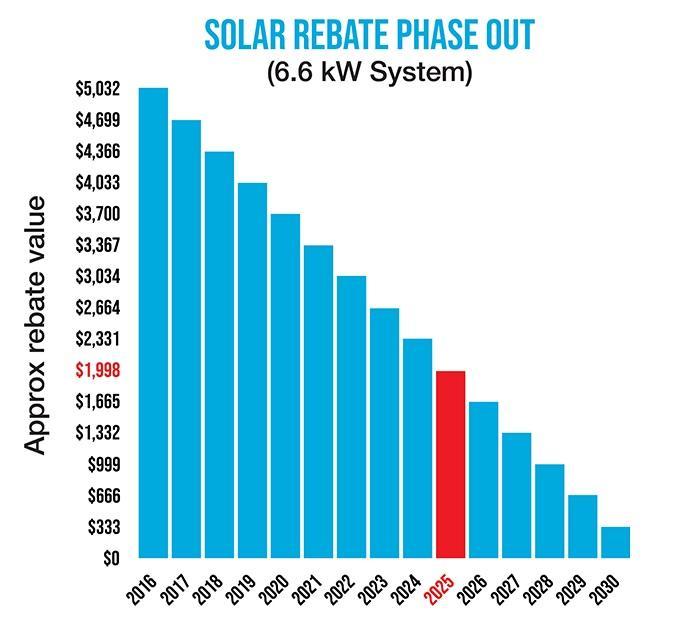
To see how much the solar panel rebate could be in your circumstances, use our STC calculator – but note prices you see advertised for systems (and what you are quoted) will already factor in the solar panel rebate.
Home Battery Rebates
Eligible Western Australians can also take advantage of 2 battery rebates.
The first is the Cheaper Home Batteries Program, which is a national scheme that like the solar panel rebate can reduce the cost of installing a battery system by thousands of dollars. You can find out how much this might be worth to you with our federal battery rebate calculator.
The second is the WA Residential Battery Scheme, available to 100,000 households across the state. Horizon Power customers can receive up to $3,800 rebate on an eligible battery. All beneficiary households will be required to participate in Horizon Power’s Virtual Power Plant (VPP – see the following section). More information on the state rebate is available here.
The Federal and State rebates are stackable, meaning you can get both if eligible. This means you could be eligible for up to $7,500 in battery rebates on a 10kWh battery (one per household). Businesses can access more rebate funding for batteries up to 100kWh with the amount of rebate paid up to 50kWh of usable capacity.*
Harking back to choosing the right installer, the generous rebates mean there is a risk of some solar/electrical companies engaging in unprofessional practices and increasing the price of their solar and batteries. Be alert for whiffy marketing and high-pressure sales – play it safe and use a SolarQuotes recommended installer.
Horizon Power’s New Virtual Power Plant (VPP)
Coinciding with the start of the rebates, Horizon Power is launching a virtual power plant (VPP) called Community Wave. A VPP connects and coordinates energy assets such as solar panels and batteries to manage the supply and demand of the electricity network. By coordinating connected assets, Horizon Power can safely balance solar energy and build a more resilient grid, leading to fewer faults and outages.
When customers install solar and/or a battery they will need to join Horizon Power’s VPP and consent to be ‘energy managed’. In return, participation in the VPP will provide financial benefits and incentives assisting system owners reduce their mains grid energy costs. Connected to this scheme is a ‘Buyback Bonus’, which offers an improved buyback rate based on peak hours and seasons. The VPP over time will expand to include other energy assets such as EV chargers and heat pump hot water systems.
There are pros and cons associated with VPPs, depending on their conditions of participation. Learn more about Virtual Power Plants in general here. Further details, including a quick video explainer, regarding Horizon Power’s Community Wave VPP is available here.
DEBS – Distributed Energy Buyback Scheme
Before the launch of Community Wave, solar customers got DEBS credits on their bill for surplus power exported to the grid. This remains available to existing solar customers. The rates vary depending on the time of day solar electricity is exported and the town/suburb it’s exported from.
Note also that DEBS is only available for solar systems with a maximum *inverter* capacity of 5 kW, but this can include solar systems with a maximum solar *panel* capacity of 6.6 kW.
Current DEBS buyback rates can be found here. They can be quite high during the late afternoon/evening peak period in some places, but the real value in rooftop solar overall is always in maximising self-consumption.
Solar/Battery Costs And Payback In Regional WA
As mentioned, the Horizon network is huge, so the financial benefits of a solar and battery system and simple payback will vary not only on a household’s energy usage profile, but also where the system is installed. Part of this is due to the level of DEBS payments you’ll receive as they can vary throughout regional Western Australia, and the solar energy resources in your part of it.
But based on the major population centres of:
- Karratha
- Port Hedland
- Broome
- Kununurra
- Carnarvon
- Esperance
… let’s take a look at a few scenarios using the SolarQuotes solar + battery calculator with its default settings. For this example, we’re using a 6.6 kW solar system on its own and with a 10-kWh battery.
Solar-Only Installation
For a solar-only scenario with the federal solar rebate (total out-of-pocket cost using good quality components: around $6,600), simple payback is achieved in around 6 years, 3 months to 6 years, 9 months depending on location.
Solar + Battery Installation
For a solar + battery system with federal solar and battery rebates applied (total out-of-pocket cost: $17,100), simple payback is achieved in approximately 9 years, 8 months to 10 years.
For a solar + battery system with federal rebates, and the maximum WA battery rebate manually subtracted from the system price total in the calculator (out of pocket total cost: $13,300) simple payback is achieved in around 7 years, 9 months to 8 years.
Adding A Battery To An Existing System
If just adding a battery, after the federal rebate an installed cost of $10,500 would provide a simple payback of around 15 years.
If adding a battery with the federal rebate and WA rebate for a total installed cost of $6,700, the simple payback is approximately 11 years – a huge difference, but note this is still outside the warranty period of most batteries (10 years).
Note also that costs/paybacks above are based on rough estimates only and on a straightforward installation — and don’t include any financial benefits from VPP participation.
If your installation scenario is particularly tricky or you’re using premium-brand components, anticipate paying more. Also note the further you are from a major population centre, the more you can expect to pay above the estimated costs.
If you’d like to get a rough simple payback estimate in your situation, try our solar and battery calculator. For existing solar owners keen on getting a battery, our add battery calculator is the tool for you as using your smart meter data, it will provide very accurate figures.
Thinking Of Going Off-Grid?
Some homeowners are tempted to cut the cord and separate from the grid entirely. In certain cases it’s not a matter of choice; such as in some remote areas where the cost to connect to the mains grid is out of reach.
But for those who are connected or able to connect to mains, it’s a very good idea to maintain it rather than try going off-grid. While a standard grid-connect solar and battery system will cover most of your needs, it won’t cover all and is unsuitable in other ways.
A proper off-grid system including generator (which you will still need from time to time) will set you back $30,000 or more. And then there’s all the maintenance (and fuel costs) involved.
The grid is a public good – it’s wise to make use of it. But if you can’t, SolarQuotes can help there too.
The Next Step
Regional Western Australia is a great place to install solar, and with the new rebates, batteries are now looking a lot better too. If you own an unshaded roof, you should at the very least install solar panels.
If you’re in regional Western Australia, SolarQuotes can help you get free no-obligation quotes and professional advice from high-quality, thoroughly vetted installers quickly and easily: